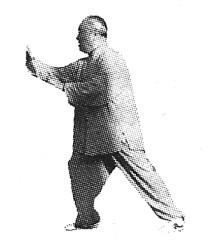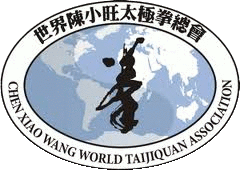What is Peng Energy?
One of the most fundamental of taijiquan energies is "Peng".
Here is how it is described in a Chinese dictionary of taijiquan terms, concepts, and personages.
|
中国太极拳辞典:
[掤]太极拳基本技法. "太极 十三势"之一. 亦为太极推手八法\ 之一。掤法为进攻之法,外向的弹 性劲。拳谱中云"拥劲义何解? 如水负舟行。先实丹田气,次要顶 头悬。全体弹簧力,开合一定间。 任有千斤重,漂浮亦不难." (太极拳八法秘诀)外形:手臂呈弧 形,前臂由下向上、向外张架;劲 力感觉:劲力浑圆向外,圆满有张 力,不使对方劲道及身,常防御对 方的"按"法。掤法可向任意方向 运用。使用时要求圆转灵活,忌 "板滞迟重"。神意:意气鼓荡,全 身无使有凹陷处。卦象:属八卦中 坎卦,卦象为水,方向为北。对应 人体的会阴等穴,养生中主练肾 经。如图。  |
From the “Chinese Taijiquan Dictionary” :
[Peng] Basic technique of taijiquan. One of the "Thirteen Postures of Taijiquan". Also one of the Eight Methods of taijiquan Push Hands. Peng is an offensive method, an outward elastic energy. The boxing manual says, "How is peng energy to be explained? Like water floating a boat. First fill the Dantian Qi, the head is suspended. The whole body is springy, settled between opening and closing. No matter how heavy it is, it is not difficult to float." From(Secrets of Taijiquan Eight Methods) Appearance: The arms form an arc, the forearms extend support from bottom to top and outward. Strength feeling: The force is round and outward, full and with some tension, so that the opponent's force does not reach the body. It is often used to defend against the opponent's "pressing" method. Peng can be used in any direction. When using it, it is required to be round and flexible, and avoid "stagnation and heaviness". Spirit: The spirit is vigorous, and the whole body is without collapse. Trigram Xiang: It belongs to the Kan Trigram in the Eight Trigrams, the Trigram Xiang is water, and the direction is north. Corresponding to the perineum and other acupoints of the human body, in terms of nourishing health, it mainly exercises the kidney. As shown in the picture.  |
